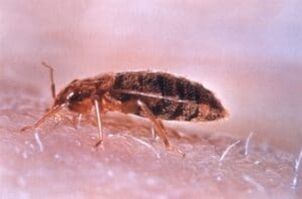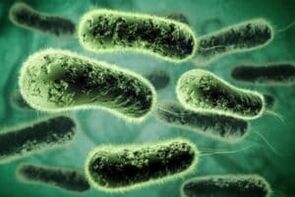Knowing the way parasites enter the body, it is possible to take preventive measures in contact with possible sources of infection. What are helminths, as intestinal parasites, is known to many people. However, ordinary people are less aware of the species that live in the circulatory system, subcutaneous lymph, muscles, brain and internal organs.
All types of parasites in the human body are classified as representative: protozoa, flat and round worms, arthropods and their larvae.Viruses, pathogenic bacteria and fungi can be classified as parasites, but they are distinguished into separate groups. Infectious diseases are divided into: viruses, fungi, bacteria and parasites. The classification of human parasites includes - a unique species of fish (common vandellia), which is able to penetrate the human urethra (random host).
Parasitism and its types

Who is a parasite? These are organisms that live at the expense of other individuals, are not genetically related to them and enter into antagonistic relationships, i. e. disrupt life. The concept of parasitism should not be extrapolated to microorganisms that live in the body without posing specific hazards. Naturally, there are plant and animal parasites, depending on the type of host. During this lifestyle function, the parasitic and host systems are constantly functioning. The first task: to live a second life, without killing it for a long time.
Classification of parasites by type:
- Localization sites: external and internal parasites (exo- and endoparasites).
- Lifestyle: parasitic form (mandatory) and free living, which under certain conditions begin to exist at the expense of other organisms (facultative parasites).
- At the time of contact with the host: temporary and permanent parasites (immobile and periodic).
In the food chain, animal parasites are usually second- or third-order users, as they eat herbivores or carnivores. The way parasites are consumed eliminates a number of nutrients and / or leads to the destruction of cells and tissues. Host antagonism often occurs because dangerous populations release toxic metabolic products. This leads to certain symptoms (allergies, disorders of the digestive system, signs of damage to various internal organs).
Virus

Virus is an intracellular parasite of protein-genetic structure. Because of the cell material, they reproduce. Viruses are mandatory parasites.
According to the classification, depending on the type of genetic material, viruses containing RNA and DNA are isolated. The first group intracellular agents include:
- Enterovirus. They multiply in the digestive tract, causing problems in various human organs.
- Rhinovirus. The causative agent of ARVI.
- Influenza, rabies and encephalitis viruses caused by lice.
- Papillomavirus.
The second group includes: adenovirus (causing acute respiratory infections), herpes and smallpox pathogens.
Viruses, entering target cells, subdue the process to themselves, integrate into genetic material or localize in the cytoplasm, then mimic (reproduce). Later, cell death occurs as a result of lysis, apoptosis, or abnormalities of the membrane structure. Some representatives (papillomavirus virus, Epstein-Barr virus) can cause cell degeneration into malignant cells.
How viruses infiltrate:
- In the air.
- Through the gastrointestinal tract while drinking water and eating food.
- Through the skin and external mucous membranes, such as the conjunctiva of the eye.
- By means of vector arthropods (insects, lice).
- Results from the use of non-sterile medical devices (syringes, pipettes).
Each virus is adapted to specific cells, differentiating targets with the help of receptors.
Bacteria

Among bacteria, rickettsiae, intracellular parasites, occupy a special position. This is the most primitive representative that resembles a virus. In humans, these microorganisms cause: typhoid fever, congenital rickettsiosis, Rocky Mountain. People are infected with rickettsiae through the bite of lice, fleas, lice.
Other intracellular parasites of chlamydia cause one of the most common sexually transmitted diseases (chlamydia) and cause serious eye inflammation, pneumonia in infants, and enteritis.
Harmful bacteria include:
- Salmonella is a causative agent of typhoid fever.
- Tetanus stick.
- A pale spirochete that causes syphilis due to a difficult diagnosis of the disease, which causes delays in treatment.
- Pneumococci, which can cause pneumonia and, more rarely, bacterial meningitis.
- Tuberculosis bacillus, which may not manifest itself for a long time, and then turns into an open form.
- Escherichia coli because of its ability to gain resistance to antibiotics. Causes gastroenteritis, rare meningitis and urinary tract infections.
External parasites such as Staphylococcus aureus are known to cause various skin infections. As a result of its most dangerous activities: pneumonia, meningitis, osteomyelitis, endocarditis, severe shock due to exposure to bacterial toxins and sepsis (in everyday life it is called blood poisoning).
Mushrooms

Disease-causing fungi - human parasites are better protected from the effects of drugs than bacteria. The most common fungal disease is candidiasis (thrush), localized on various mucous membranes with a weakened immune system. Mushrooms of the genus Candida live in the body of any healthy person and pose a real danger only if the protective function fails. Bacterial pathogens and fungi are conditionally a group of microorganisms bordering between the non-pathogenic and pathogenic categories. Therefore, as a rule, they are not classified as parasites.
Pathogenic mycelium fungus is a human parasite that often causes disease on the outside:
- Keratomicosis. Fungal reproduction occurs in the keratinized zone of the epidermis or on the cuticle of the hair (trichosporia nodosum, versicolor versicolor).
- Dermatophytosis. Pathogens affect not only the epidermis, but also the dermis, nails and hair (ringworm, scabies).
- Mycoses in. Damage to nearby skin and tissues, as well as internal organs. These include histoplasmosis - a severe systemic fungal disease and aspergillosis - damage to the mucous membranes and skin caused by aspergillus.
The classic causes of bacterial and fungal infections are sick people, animals, soil, dirty water and food.
Protozoa
Protozoa are other unicellular parasites along with bacteria and fungi. What protozoa parasites of an isolated person depend on the systematic position?
- Some types of amuba are facultative parasites. The most famous is amoeba dysentery, which enters the human body in the form of cysts (rest form). Pathogens enter the large intestine (luminal form), then penetrate into the mucous membranes and affect various internal organs with blood flow. Amuba is an aquatic organism, so the main source of infection with them is dirty water. Acanthamoeba keratitis is a rare eye disease called acanthamoeba keratitis, which becomes more frequent due to the increasing popularity of contact lenses.
- Flagellates (Leishmania, Giardia, Trichomonas). Trichomoniasis is the most common disease of the genitourinary system, dangerous because of its complications (infertility, prostatitis, premature birth, etc. ).
- Apicomplexes (Sporozoans). With the exception of colpodellids, this group includes only mandatory parasites (Toxoplasma, Plasmodium malaria, Cryptosporidium, Coccidia, sarcocysts). Sporozoan cysts enter the body after being bitten by an insect, eating infected animals or drinking water.
- Ciliates. For humans, balantidia is dangerous, provoking diarrhea and boils in the intestinal wall due to activity in the large intestine. Ciliates are the largest pathogenic unicellular organisms.
The simplest human parasite causes protozoa infection (protozosis). What parasites live in the human nervous system between protozoa? For example, the causative agent of toxoplasmosis and cerebral malaria. Among amuba, the Neglerius Fowler faculty parasite is capable of infecting the nervous system.
Multicellular
Multicellular parasites include flatworms, ringworms, arachnids, and insects. The first, as a rule, resides inside a person (in various systems and internal organs), and certain species migrate or penetrate (rishta, larvae of Gnathostoma spinigerum and mine worms, schistosomes) into the subcutaneous layer. Worms are the colloquial names of all worms that cause helminthic attacks (helminthiases).
Common diseases caused by flatworms
Trematode group (digenetic flukes):
- Opisthorchiasis. Causing agents: types of liver flux, for example, cats and Siberians. Infection occurs as a result of eating infected river fish, poorly processed thermally.
- Fascioliasis. Caused by hepatic and giant fever. Infection occurs through ingestion of contaminated water or coastal grass.
- Schistosomiasis. The causative agent of schistosomes (blood coincidence) lives mainly in hot climates. They penetrate the skin when in contact with water.
- Paragonimiasis. The cause of this disease is the coincidence of the lungs, which are found in hot climates. Crabs or freshwater crabs infected with worms and not processed properly are dangerous.

The life cycle of parasites from the trematode group is complex, including several stages of larvae and gastropods as intermediate carriers. Flukes are parasites of vertebrate animals, acting as temporary and permanent hosts. Individual larval stages can develop without fertilization. Flukes devices for repairing and feeding inside the host are suckers.
Tapeworms are parasites of the small intestine of humans. Their bodies are made up of segments (proglottids), which periodically break down and come out along with fertilized eggs. The stage of the tapeworm life cycle must include finna (blister worm), which is formed in the temporary owner. The host continued to swallow Finn, who developed into a tapered (adult) form. The structural feature of tapeworms is the absence of the digestive system and the absorption of nutrients by the entire surface.
Most common:
- Cattle tapeworms (unarmed tapeworms) cause teniarinhoses. Infection occurs through beef, its muscles are curbed by the Finns, which form in the body after the animal swallows the egg with food.
- Pig tapeworms (armed tapeworms) are the causative agents of cysticercosis (Finn stage) and teniasis (adult). In addition to the suction, the helminth is equipped with a hook mount. One can simultaneously perform the functions of an intermediate owner and a permanent owner.
- Wide tapeworms cause diphyllobothriasis. The intermediate hosts are copepod and fish. A person can be infected through salty caviar and freshly cooked or fried freshwater fish.
Parasites eat blood and tissues (flukes) or digested food (tapeworms).
Round Worms
What type of parasite is common in humans is the ringworm (nematode)?

- Ascaris. Ascariasis includes migration (larval) and intestinal (adult) stages. Larvae penetrate the walls of the small intestine, move to the lungs, pass through the liver and heart, successively pass the molting stage. It enters the oral cavity, is swallowed again and becomes an adult in the small intestine.
- Pinworm. The causative agent of enterobiasis consumes the end zone and the beginning of the small and large intestine, multiplying in the ileum. Females lay eggs in the folds of the anus, causing severe itching.
- Vlasoglav is the cause of trichocephalosis. This parasite in the human body invades the mucous membranes of the early part of the large intestine and consumes tissue and blood fluids.
- Trichinella causes dangerous trichinosis disease. In severe cases, the nervous system is damaged. This is a real killer, whose larvae penetrate the walls of the small intestine and are carried throughout the body. Often they get into the muscular muscles, they can penetrate the eyes, causing pain and swelling of the face, into the lungs, causing coughing. To date, there is no cure for full recovery.
- Toksokara. Distinguish between larvae (occurring more frequently) and imaginal (intestinal) toxocariasis. Invasion is characterized by the severity of allergic reactions. Larvae spread throughout the body, enter tissues, enclose and form granulomas.
- Mining worms are more common in tropical and subtropical regions. With worm infestation, the worms in the intestine secrete proteolytic enzymes that destroy the walls and reduce blood clotting. Parasites in a person appear as a result of the introduction of larvae through the skin from contaminated water.
- Escherichia coli and related species are tropical parasites. The disease they cause, strongyloidosis, can be asymptomatic for decades. With reduced immunity, worm carriers are at high risk of death (60-85%).
- Rishta is a subtropical worm that causes dracunculiasis. Larvae penetrate the intestinal wall. Females reach the subcutaneous layer and when the host is in the water, they release larvae through the skin. The temporary host is a copepod lobster.
The characteristics of parasitic habitats affect the way they enter the body: contact with contaminated water or soil, with larval stage carriers inhabiting them. Many representatives of the ringworm do not have intermediate hosts and belong to geohelminths. Infection with them occurs mainly through contaminated water, hands, unwashed fruits or vegetables, as well as through the consumption of meat from wild animals.
Treatment and adverse effects of helminthiasis
An important method of diagnosing helminthiasis is a blood test. Eosinophils (a type of white blood cell) found in high concentrations along with other signs of infection indicate the presence of worms and a number of pathogenic protozoa in the body. How are helminthiases treated? Drugs are used to relieve symptoms and specific treatments. Anti-allergic therapy (desensitizing) and detoxification are used. Basically, the drug is given by infusion (using a dropper), sometimes injections are used:
- Drugs that replace plasma and eliminate the effects of toxins.
- Isotonic glucose solution and salt.
- Vitamin C and B6.
- Sodium bicarbonate (soda), calcium chloride or gluconate.
- Preparations used at high temperatures.
- Hormone drugs are used in difficult conditions (with hepatitis or allergic myocarditis). Potassium intake is combined with them.
- Remedies for heart failure and edema.
There is evidence that certain parasitic worms, such as pygmy worms, can cause cancer. Larval stem cells can degenerate into cancer. Parasites can indirectly cause cancer by weakening the immune system. Interesting data were obtained in a study on the effects of trematodes affecting the liver. As a result of exposure to waste products, normal cells can turn into cancer cells. Parasites are mainly localized in the digestive system, but their larvae can penetrate into various internal organs. For example, in the kidneys (echinococcosis, schistosomiasis), heart muscle (cysticercosis, mine worm disease), liver (echinococcosis). Parasitic worms in humans often affect the nervous system. Cysticercosis, echinococcosis, alveococcosis and known schistosomiasis of the brain.
Arthropods
Insect sequences include well-known ectoparasites such as lice, sleeping lice, blood-sucking diphtheria. Unlike lice, these are temporary parasites, that is, they live unbalanced with the help of the host. Arthropod parasites in the arachnid sequence include the famous scabies mites. Male and female marriages occur on the surface of the epithelium. Parasites in the human body then lay eggs in the keratin layer of the skin, causing severe itching. Many people know what ixodid lice are. These are arthropod parasites of the arachnid sequence, including the most well-known representatives of taiga lice - carriers of dangerous infections (lice-borne encephalitis, Lyme disease). Among the dipterans that suck blood, there are: non-malaria and malaria mosquitoes, mosquitoes, midges, midge bites, horseflies and real flies. These arthropod parasites can cause strong allergic reactions, as well as carriers of viral and bacterial infections. Some flies, especially gadflies, place larvae under human skin, causing myiasis. Larvae are able to penetrate into the body.






































